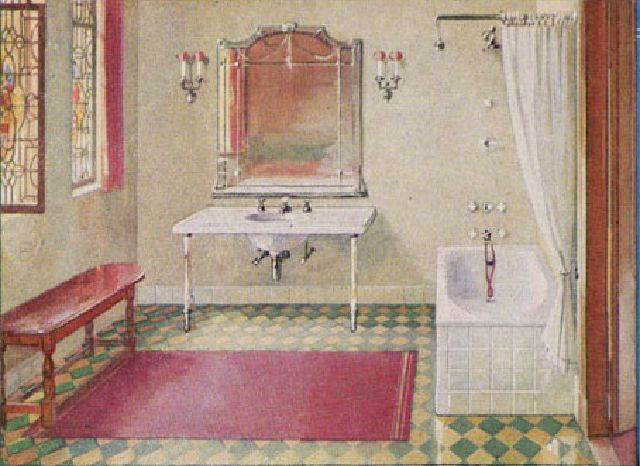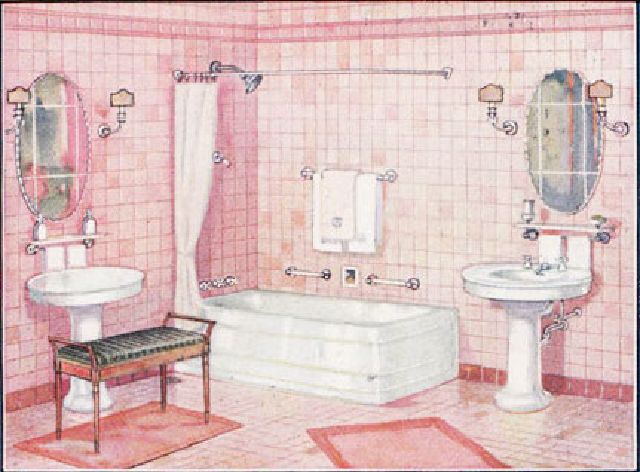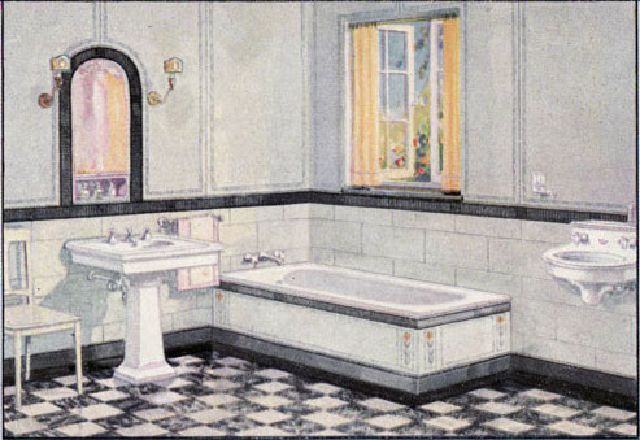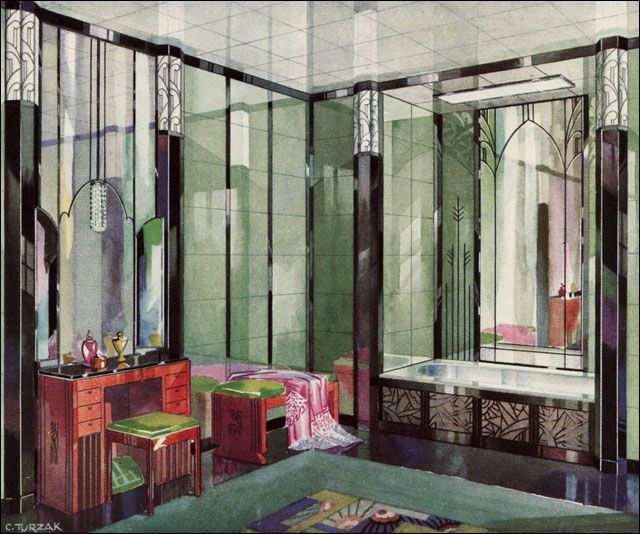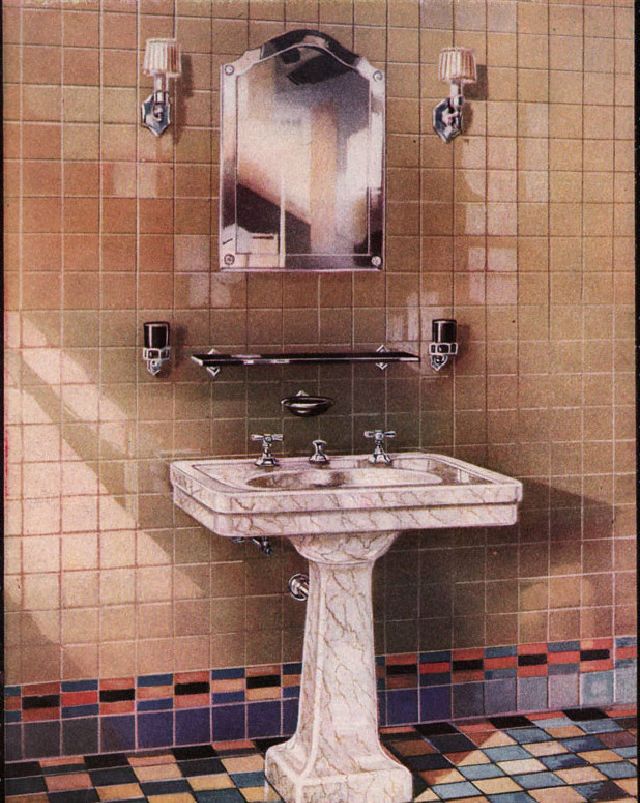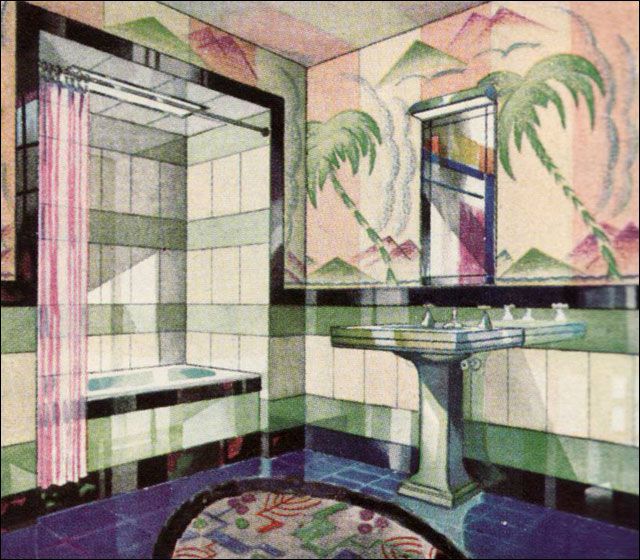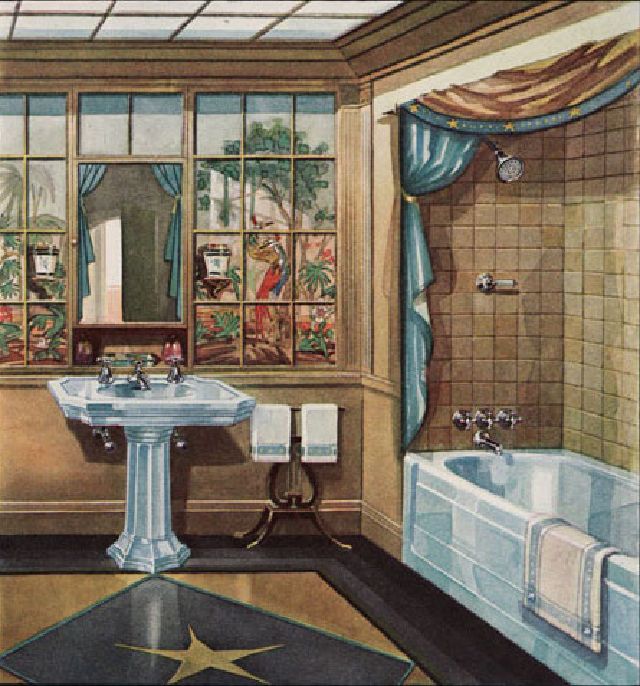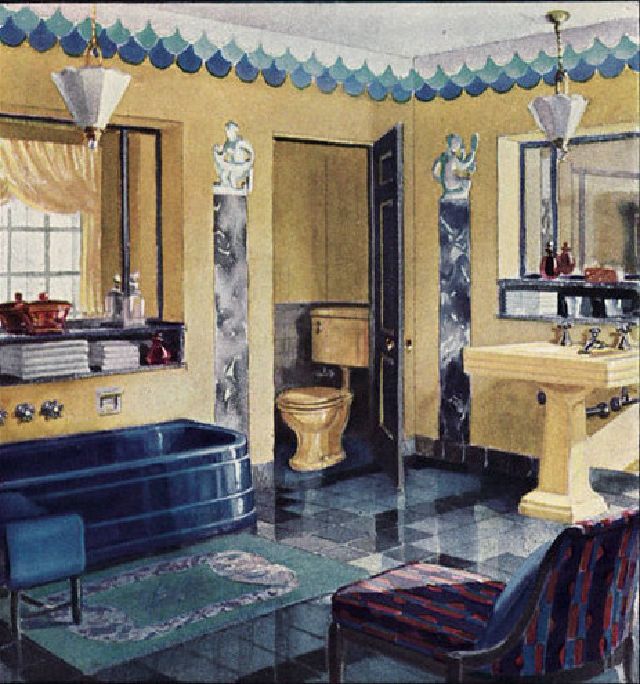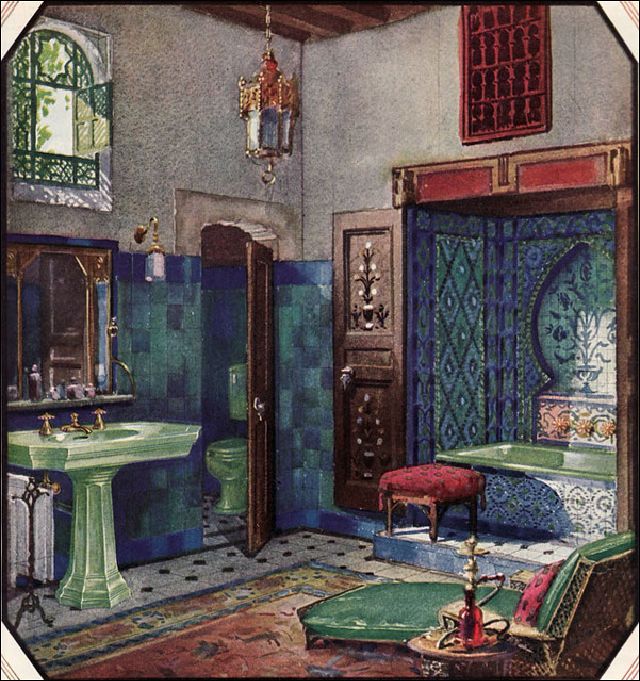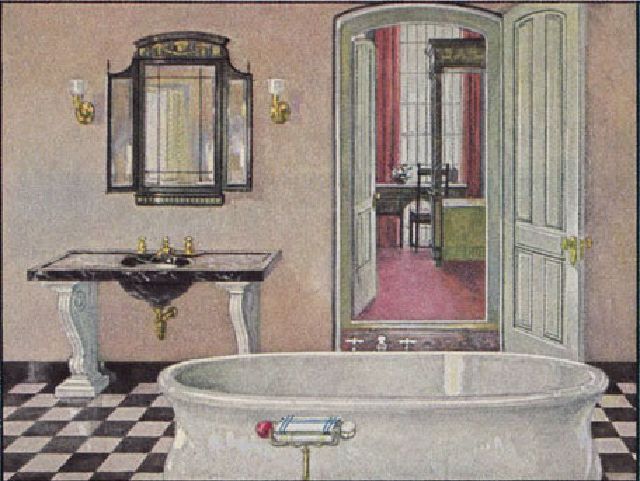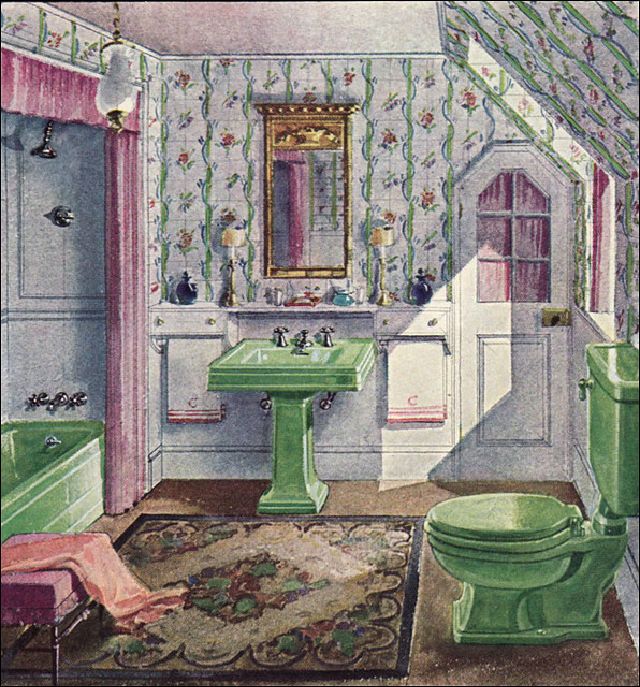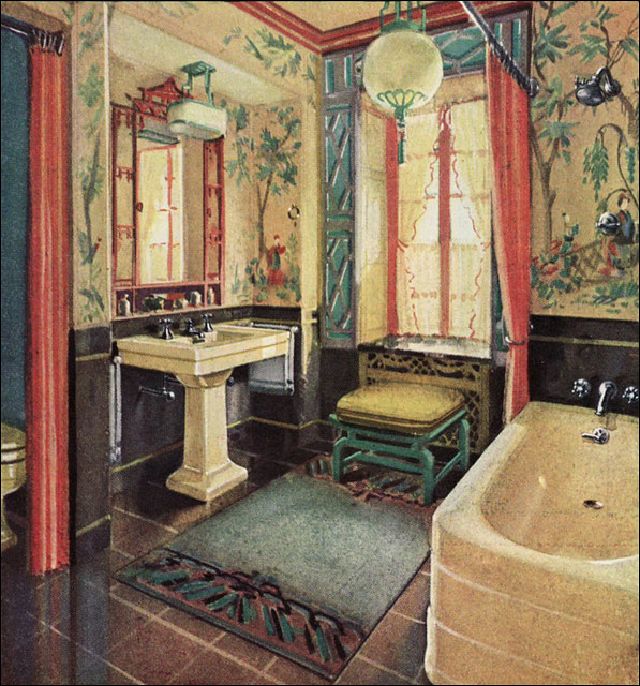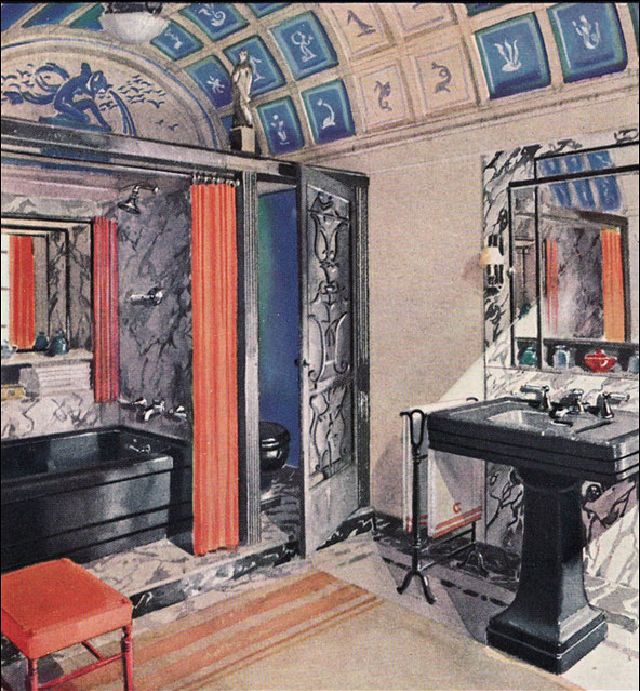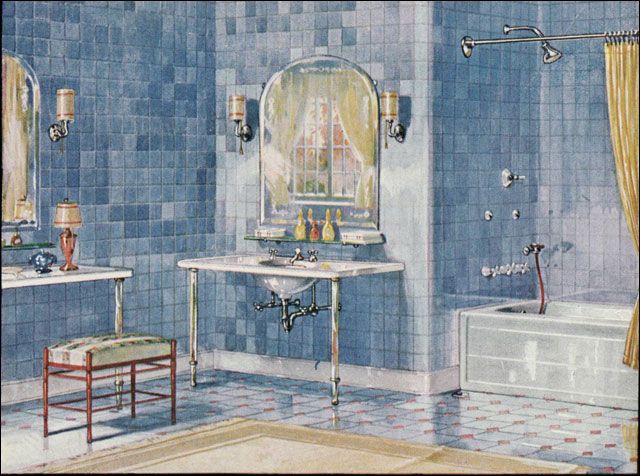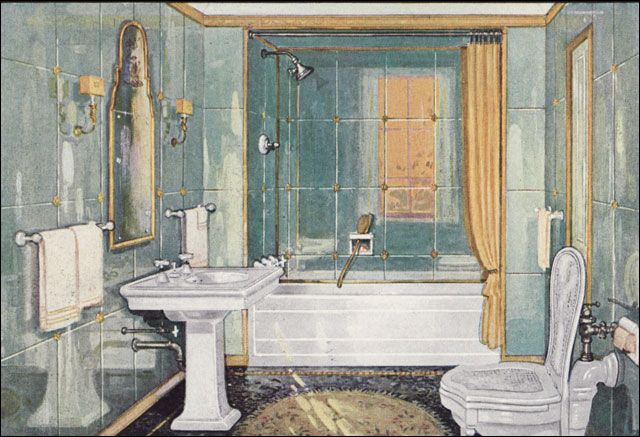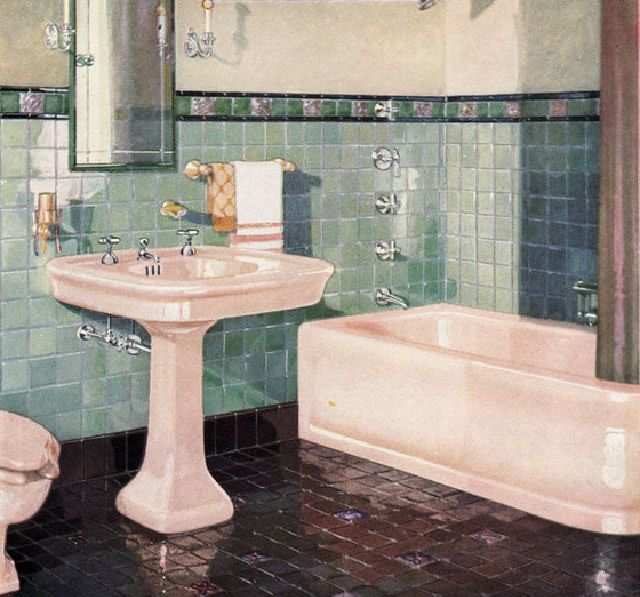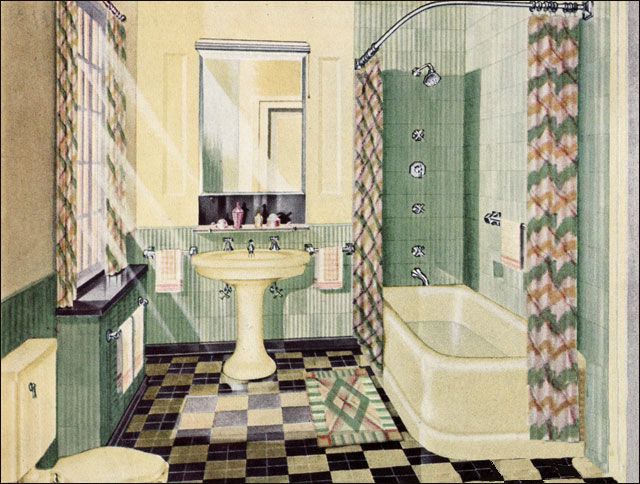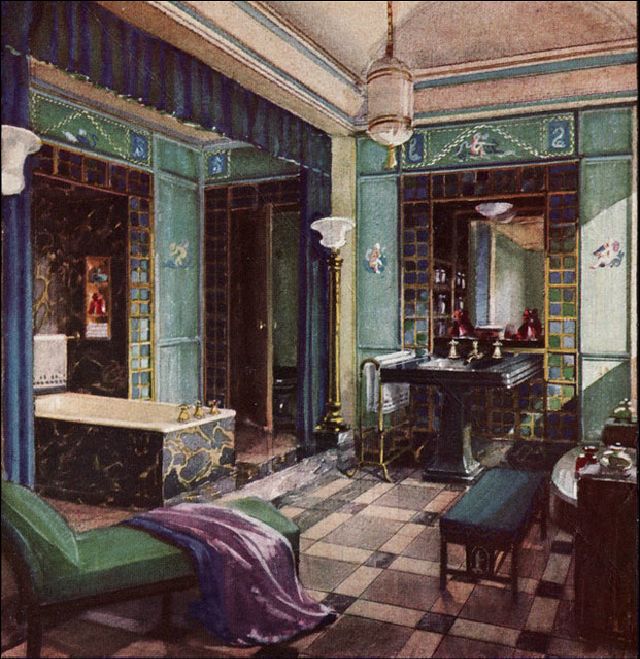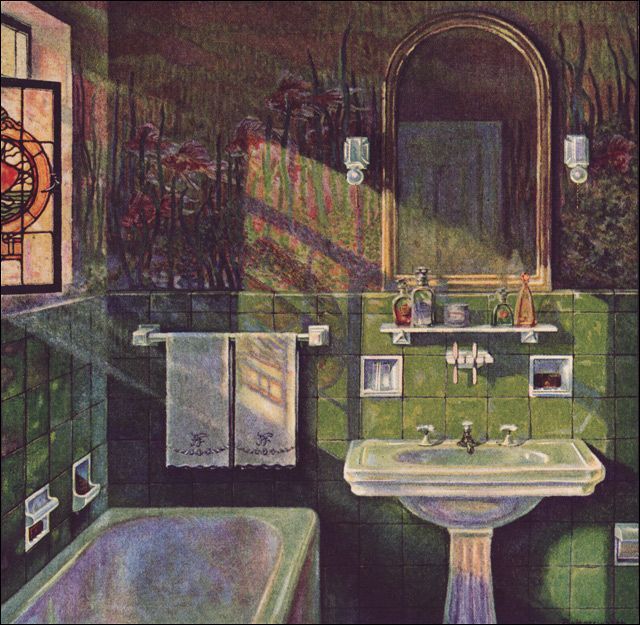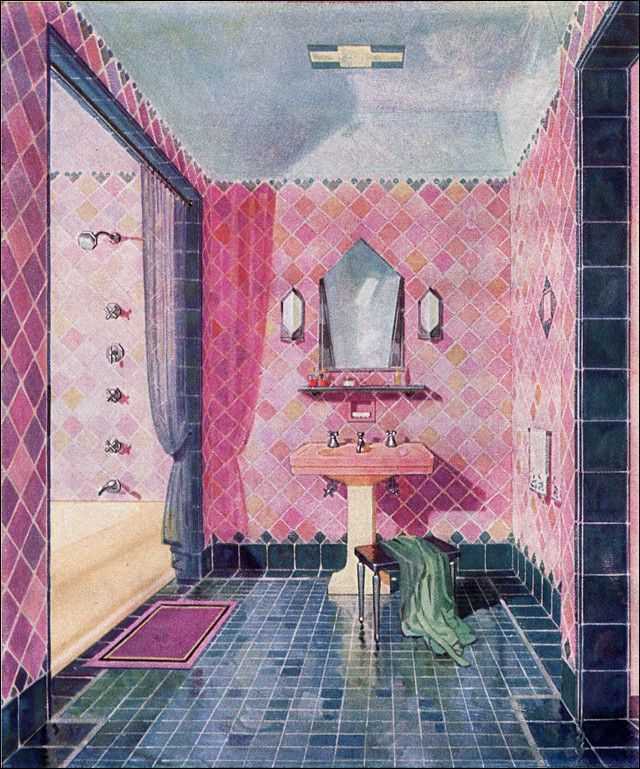In bathrooms, this influence was unmistakably visible through the use of intricate mosaic tiles that adorned floors and walls. These tiles, often in bold monochromatic or contrasting color schemes, brought an element of drama and grandeur, transforming the bathroom into a veritable work of art. As modern manufacturing processes advanced, bathrooms became showcases for these remarkable materials. Gleaming porcelain and chrome fixtures graced sinks and faucets, while the luxurious allure of marble countertops and accents exuded an air of timeless elegance. These opulent materials not only elevated the aesthetic appeal of bathrooms but also echoed the era’s fervor for progress and refinement. The burgeoning film industry and the rise of Hollywood had a significant impact on bathroom design during the 1920s. Bathrooms were no longer relegated to mere functional spaces; they transformed into glamorous sanctuaries where one could escape into a world of luxury and sophistication. Hollywood-inspired vanity mirrors with intricate frames, often adorned with Art Deco motifs, added a touch of cinematic charm. Soft lighting, reminiscent of the flattering illumination used in movie studios, became a hallmark feature, casting a warm and inviting glow upon these private retreats. The Modernist movement, with its emphasis on functional design and clean lines, made its presence felt in bathrooms as well. Space-saving fixtures like wall-mounted sinks and built-in storage solutions catered to the evolving urban lifestyle, where efficiency and practicality were cherished virtues. While precise costs are lost to time’s embrace, the legacy of these enchanting bathrooms lives on. The bathrooms of the 1920s stand as a reminder of an era that reveled in creativity, embraced the allure of luxury, and left an indelible mark on interior design.
(Photo credit: Rikki Nyman via Flickr at flickr.com/photos/americanvintagehome). Notify me of new posts by email.
Δ Subscribe


